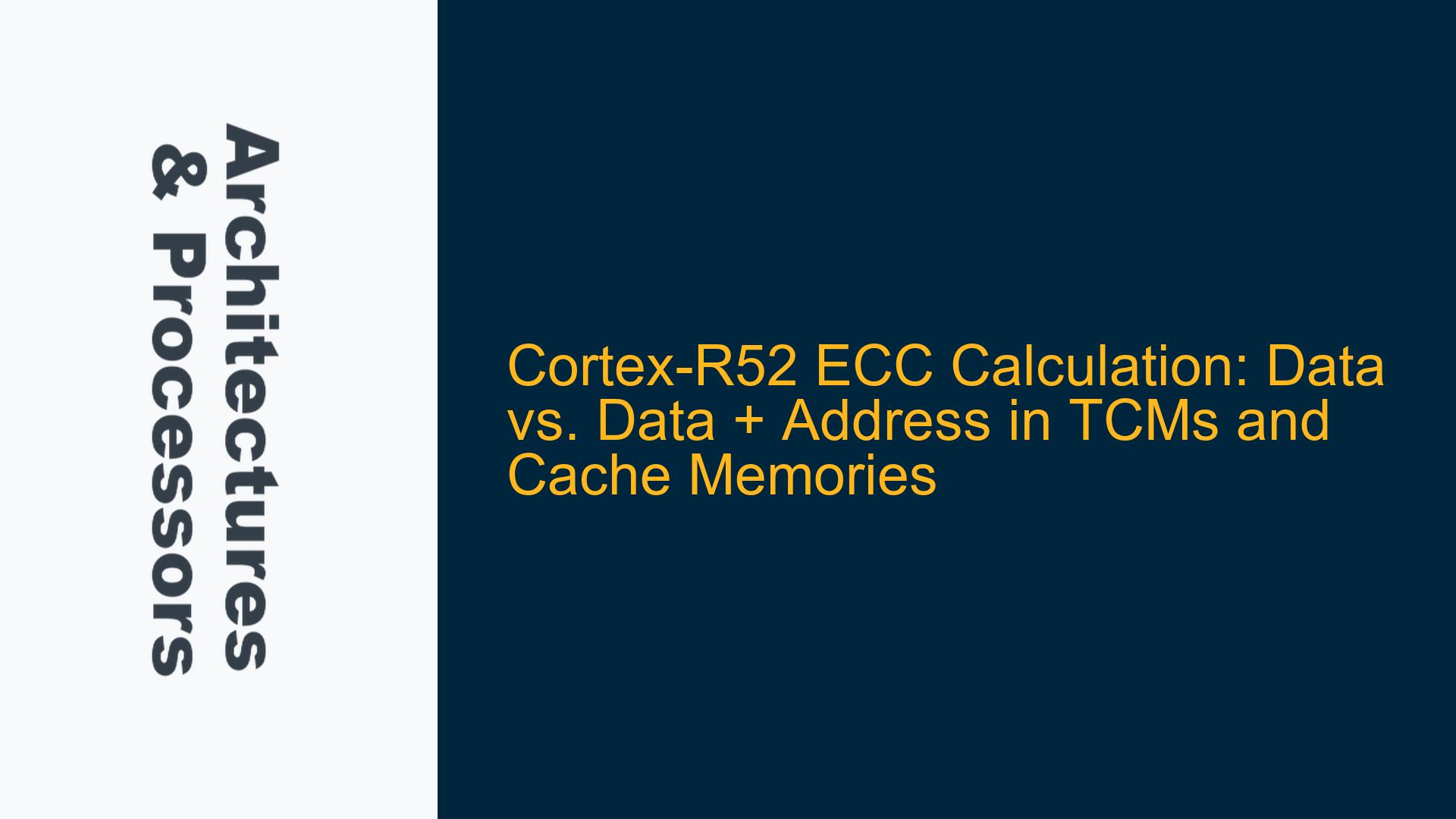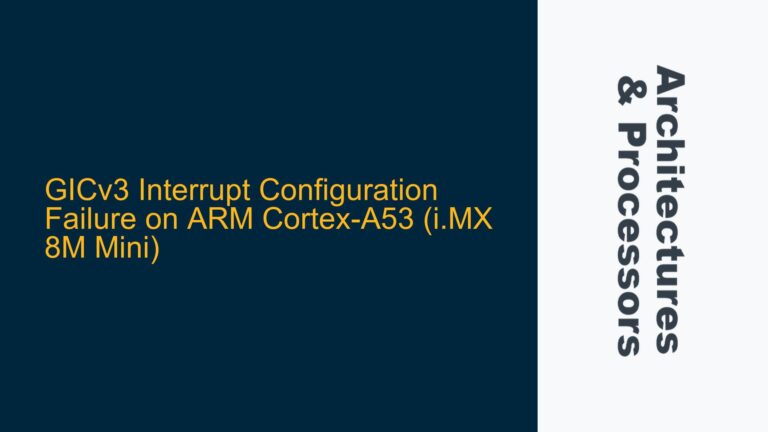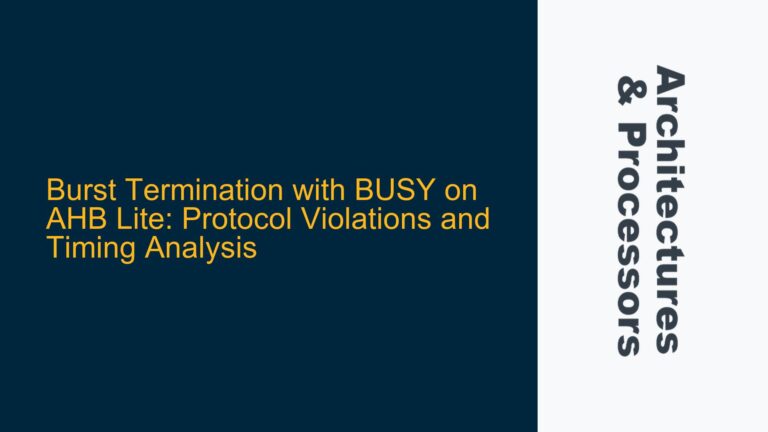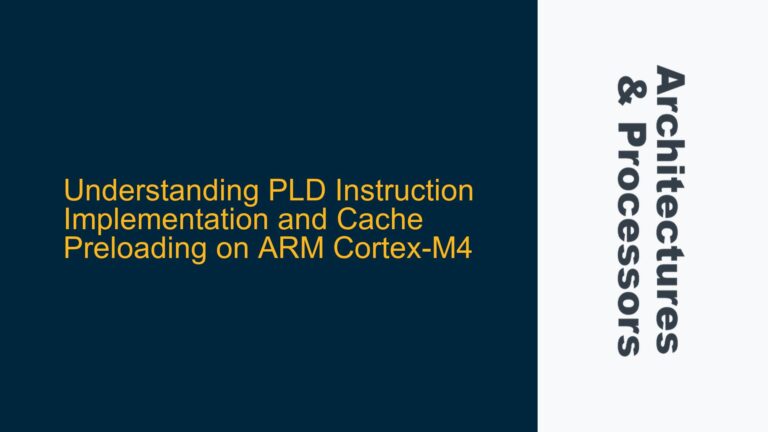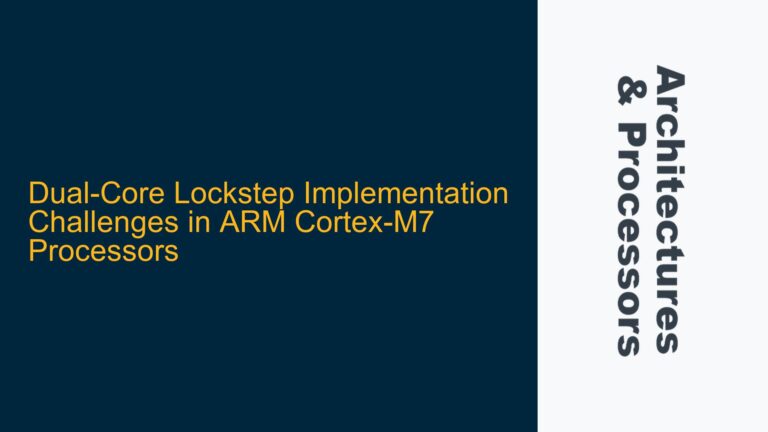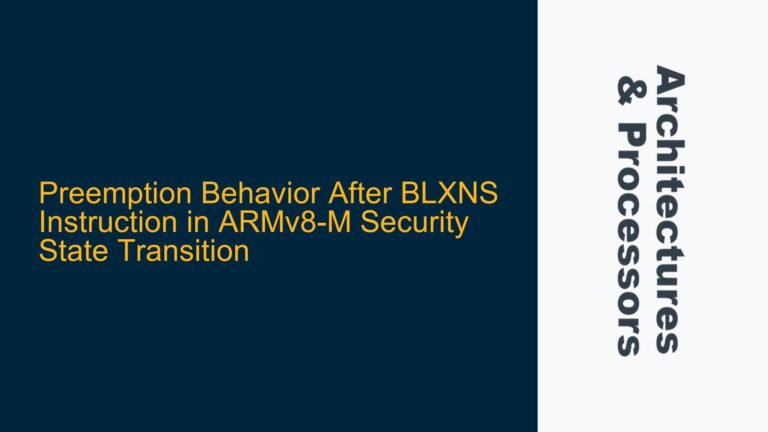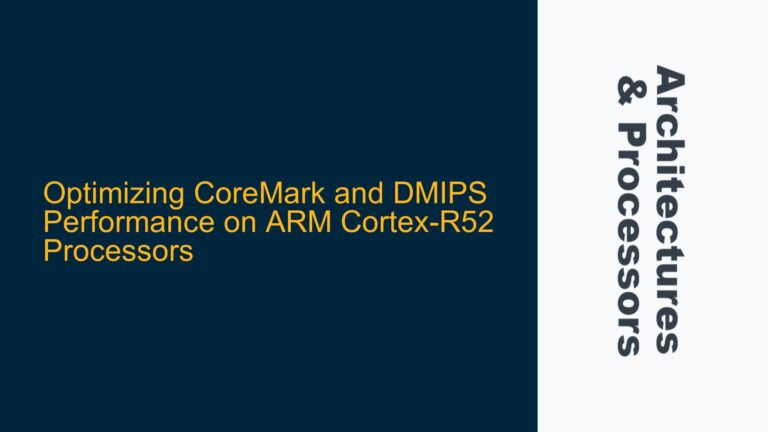ARM Cortex-R52 ECC Implementation for TCMs and Cache Memories
The ARM Cortex-R52 processor is widely used in safety-critical applications where error detection and correction are paramount. One of the key features enabling this reliability is Error Correction Code (ECC) for Tightly Coupled Memories (TCMs) and cache memories. ECC is a mechanism that detects and corrects errors in data storage, ensuring data integrity. However, a critical question arises: Does the ECC calculation in the Cortex-R52 cover only the data stored in memory, or does it also include the address fields associated with that data? This distinction is crucial for understanding the extent of safety protections, particularly for the address bus between the Cortex-R52 and the memories.
In safety-critical systems, such as automotive or industrial applications, the address bus is as vulnerable to faults as the data bus. Faults in the address bus can lead to incorrect memory accesses, which may not be detected if ECC only covers data. Therefore, understanding whether ECC includes address fields is essential for assessing the overall fault tolerance of the system.
The Cortex-R52 architecture provides ECC for both data and tag memories in caches and TCMs. However, the specifics of ECC calculation—whether it includes address fields—are not always explicitly documented. This post delves into the technical details of ECC implementation in the Cortex-R52, exploring the implications of ECC coverage on system safety and reliability.
Memory Safety Protections and ECC Coverage in Cortex-R52
The Cortex-R52 processor is designed with a focus on functional safety, making it suitable for applications requiring high reliability, such as automotive systems, industrial control, and medical devices. ECC is a critical component of this safety architecture, providing protection against both transient and permanent faults in memory. However, the scope of ECC coverage—whether it includes address fields—has significant implications for system safety.
In typical ECC implementations, the code is calculated based on the data stored in memory. When data is read back, the ECC logic recalculates the code and compares it with the stored code. If there is a mismatch, an error is detected, and correction is attempted. However, this process only ensures the integrity of the data itself. If the address bus is faulty, the processor might read or write data from or to an incorrect location, leading to undetected errors.
In the Cortex-R52, the ECC for TCMs and cache memories is primarily designed to protect the data and tag fields. The tag memory in caches stores the address information associated with cached data. If ECC covers the tag memory, it indirectly provides some level of protection for the address information. However, this does not necessarily extend to the address bus itself. The address bus is a separate pathway that carries the address information between the processor and the memory. Faults on the address bus can cause incorrect memory accesses, even if the data and tag memories are protected by ECC.
To fully understand the safety protections in the Cortex-R52, it is essential to consider the interaction between ECC and the address bus. If ECC does not cover the address fields, additional mechanisms may be required to ensure the integrity of the address bus. These mechanisms could include parity checks, redundancy, or other forms of error detection and correction specifically designed for the address bus.
Ensuring Comprehensive Safety with ECC and Address Bus Protections
To address the potential gap in safety protections, it is necessary to implement a combination of ECC for data and tag memories and additional mechanisms for the address bus. The Cortex-R52 provides several features that can be leveraged to enhance system safety.
First, the ECC implementation in the Cortex-R52 covers both data and tag memories in caches and TCMs. This means that errors in the stored data and the associated address information (tags) can be detected and corrected. However, as previously mentioned, this does not directly protect the address bus. To address this, the Cortex-R52 supports parity checking on the address bus. Parity checking is a simpler form of error detection that can identify single-bit errors in the address information.
In addition to parity checking, the Cortex-R52 supports redundant execution and lockstep configurations. In a lockstep configuration, two Cortex-R52 cores execute the same instructions in parallel. The outputs of the two cores are compared, and any mismatch indicates an error. This approach provides a high level of fault tolerance, including protection against address bus faults.
Another approach to enhancing address bus safety is to use memory protection units (MPUs) or memory management units (MMUs). These units can be configured to detect and prevent unauthorized or incorrect memory accesses. While they do not provide error correction, they can help mitigate the impact of address bus faults by ensuring that only valid addresses are accessed.
In summary, while the Cortex-R52’s ECC implementation provides robust protection for data and tag memories, additional measures are required to ensure comprehensive safety, particularly for the address bus. By combining ECC with parity checking, redundant execution, and memory protection mechanisms, it is possible to create a highly reliable and fault-tolerant system.
Detailed Analysis of ECC Calculation in Cortex-R52 TCMs and Cache Memories
To fully understand the ECC implementation in the Cortex-R52, it is necessary to delve into the technical details of how ECC is calculated and applied to TCMs and cache memories. The Cortex-R52 uses a combination of ECC and parity checking to protect different parts of the memory hierarchy.
In the case of TCMs, ECC is applied to both the data and the tag fields. The data field contains the actual data stored in memory, while the tag field contains the address information associated with that data. The ECC calculation for the data field is based on the data itself, while the ECC calculation for the tag field is based on the address information. This means that errors in either the data or the tag fields can be detected and corrected.
For cache memories, the situation is slightly more complex. The cache memory is divided into data memory and tag memory. The data memory stores the cached data, while the tag memory stores the address information associated with the cached data. The ECC calculation for the data memory is based on the data itself, while the ECC calculation for the tag memory is based on the address information. This provides protection against errors in both the cached data and the associated address information.
However, it is important to note that the ECC calculation for the tag memory does not directly protect the address bus. The address bus is a separate pathway that carries the address information between the processor and the memory. Faults on the address bus can cause incorrect memory accesses, even if the tag memory is protected by ECC. Therefore, additional mechanisms, such as parity checking or redundant execution, are required to protect the address bus.
In conclusion, the Cortex-R52’s ECC implementation provides robust protection for data and tag memories in TCMs and caches. However, to ensure comprehensive safety, additional measures are required to protect the address bus. By combining ECC with parity checking, redundant execution, and memory protection mechanisms, it is possible to create a highly reliable and fault-tolerant system.
Practical Steps for Implementing ECC and Address Bus Protections in Cortex-R52 Systems
Implementing ECC and address bus protections in a Cortex-R52 system requires careful planning and configuration. The following steps outline a practical approach to achieving comprehensive safety in Cortex-R52-based systems.
First, enable ECC for TCMs and cache memories. This can typically be done through the processor’s configuration registers. Ensure that ECC is enabled for both data and tag memories in caches and TCMs. This will provide protection against errors in the stored data and the associated address information.
Next, configure parity checking for the address bus. The Cortex-R52 supports parity checking on the address bus, which can be enabled through the processor’s configuration registers. Parity checking provides a simple form of error detection that can identify single-bit errors in the address information.
Consider implementing redundant execution or lockstep configurations. In a lockstep configuration, two Cortex-R52 cores execute the same instructions in parallel, and their outputs are compared. Any mismatch indicates an error, providing a high level of fault tolerance, including protection against address bus faults.
Configure memory protection units (MPUs) or memory management units (MMUs) to detect and prevent unauthorized or incorrect memory accesses. While these units do not provide error correction, they can help mitigate the impact of address bus faults by ensuring that only valid addresses are accessed.
Finally, perform thorough testing and validation of the system. This should include fault injection testing to verify the effectiveness of the ECC and address bus protections. Fault injection testing involves intentionally introducing faults into the system to ensure that the error detection and correction mechanisms are functioning correctly.
By following these steps, it is possible to create a highly reliable and fault-tolerant Cortex-R52-based system that provides comprehensive protection against both data and address bus errors.
Conclusion
The ARM Cortex-R52 processor provides robust ECC protection for data and tag memories in TCMs and caches. However, to ensure comprehensive safety, additional measures are required to protect the address bus. By combining ECC with parity checking, redundant execution, and memory protection mechanisms, it is possible to create a highly reliable and fault-tolerant system. Implementing these protections requires careful planning and configuration, but the result is a system that can withstand both data and address bus errors, making it suitable for even the most demanding safety-critical applications.
